Wildly impractical, tantalisingly rare and defiantly weird.
These qualities make the long-discontinued Trek District Carbon one of my dream bikes, and I would argue the brand’s coolest bike ever.
The District Carbon was an ultra-premium, all-carbon, dedicated singlespeed belt-drive bike that absolutely nobody needed – and few could afford at £2,800. That was just £100 less than the broadly equivalent Ultegra-equipped Madone 5.9 of the time.
Even with today’s inflated prices, £2,800 is still an irrational price for a nominally simple singlespeed bike (let alone in 2009), but that was hardly the point.
While I need another daft fixie like a hole in the head, my eBay saved search will forever prowl classified listings waiting for the day I have a go-fast hole in my heart (and a suitably fat wallet).
A short history of the District Carbon – the bike Trek didn't need to build
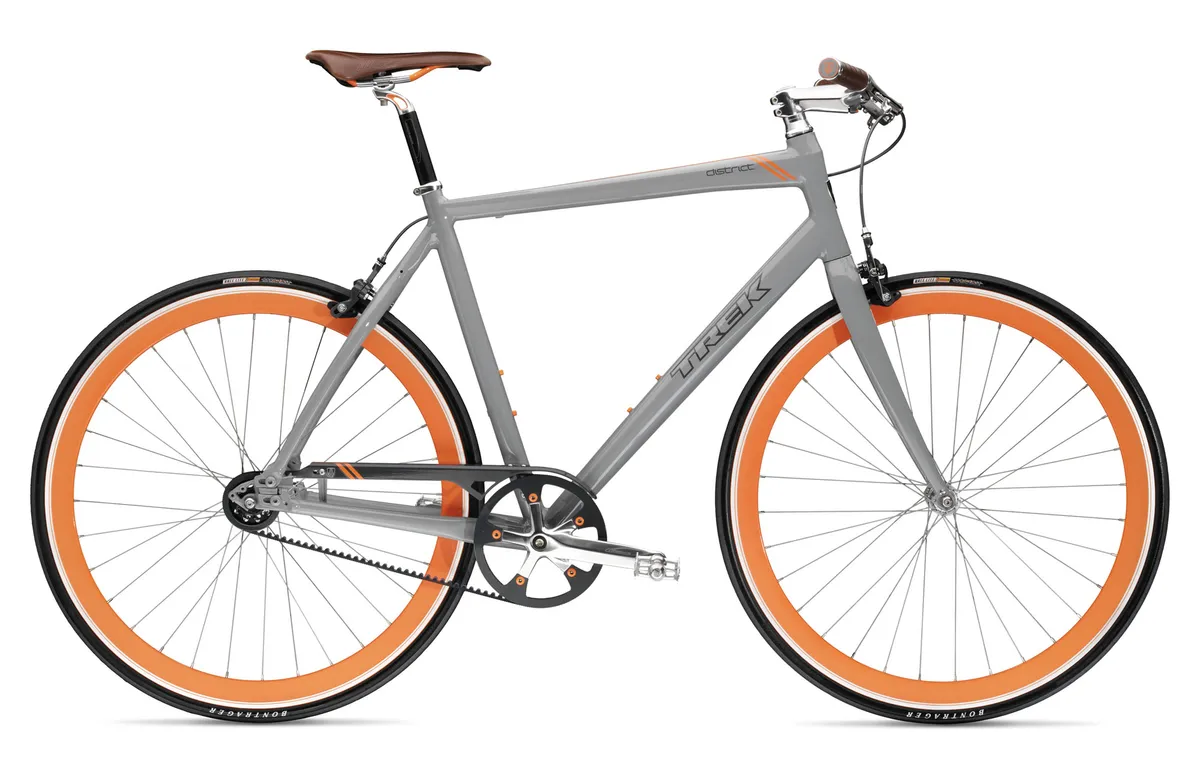
The original Trek District was a dedicated singlespeed commuter.
Constructed from beefy alloy tubes and finished in a honkin’ grey and orange colour scheme, the bike was designed for day-to-day urban abuse.
But based on a circa-2010 Madone, the District Carbon was an altogether different beast.
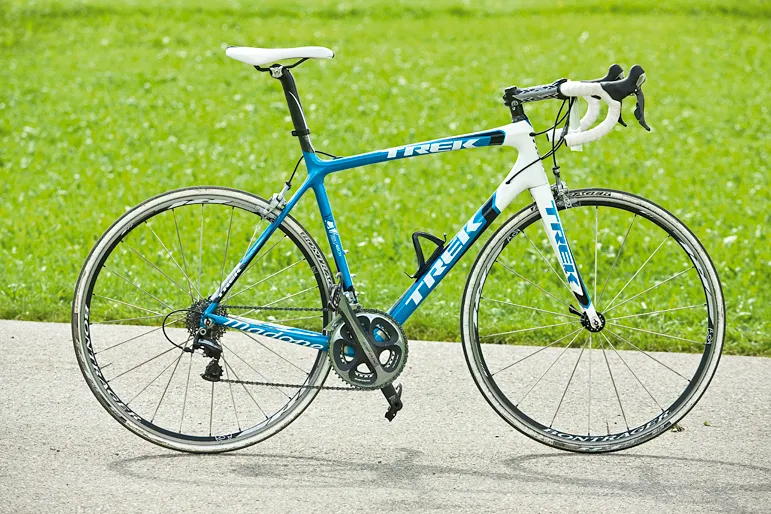
At the time, the Madone was Trek’s all-rounder race bike (which bears more than a passing resemblance to the modern-day Emonda).
I would love to know what led Trek to think this would make a good basis for a singlespeed hack, but the cycling world is all the richer for this seemingly irrational whim.
The District Carbon was available in two builds.

The first was a stealthy drop-bar build based on finishing kit, tyres, wheels and brakes from Bontrager. This was paired with an FSA crankset and a Gates belt drive.
The stock drop-bar build came in at roughly 7kg depending on frame size, and I still covet it.
A second flat-bar special-edition Livestrong tribute bike was also shown, but this doesn’t appear to have been available to buy.
Eccentric in every sense of the word
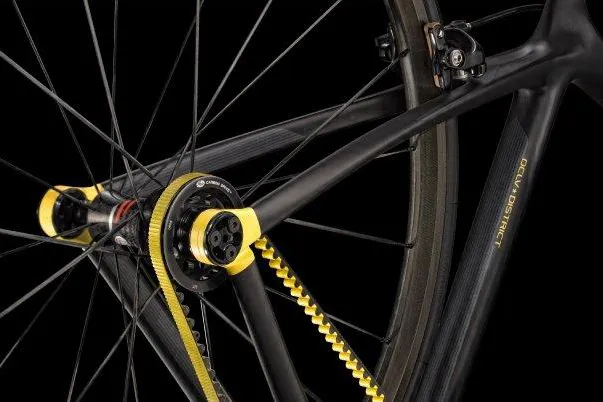
The District’s weird-yet-elegant dropouts appeal to the contrarian part of my brain.
Most singlespeed bikes, including track bikes, hold the rear wheel in slotted horizontal dropouts (technically ‘track ends’ if you want to be a pedant). Moving the wheel fore and aft tensions the chain.
The District Carbon used an eccentric dropout that moved the axle of the hub in a fixed radius (concentrically) around the centre of the dropout. Turning this would tension the belt.
The design would also, in theory, make it possible to run the bike as a fixed gear.
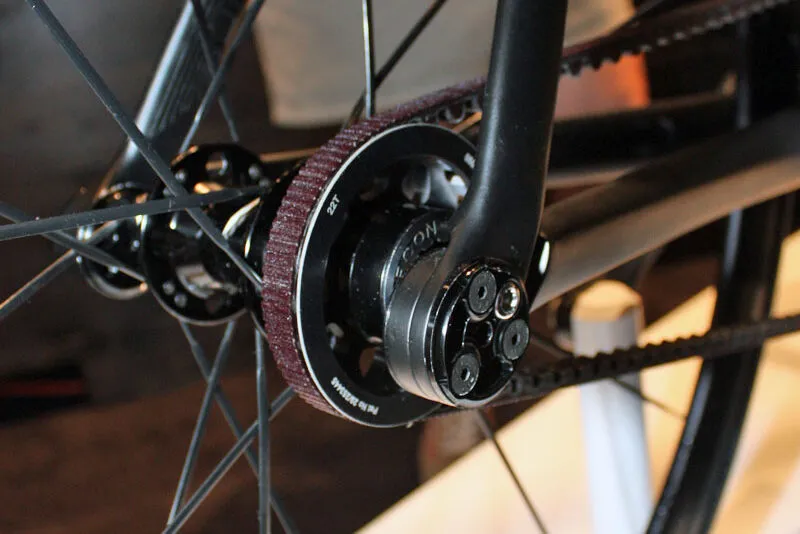
Although splittable belts are now commonly available, they weren't when the District Carbon was produced.
Unlike a chain, a conventional belt drive belt cannot be split. This requires a gap to be built into the frame to enable the belt to be fitted.
Most bikes have a gap at the dropouts (this is how the alloy District worked), or a removable slot built into the seatstays. You would then pass the belt through this slot.
The District Carbon featured a novel design that enabled you to split the chainstays and seatstays at the point they met, sliding the belt between the two.
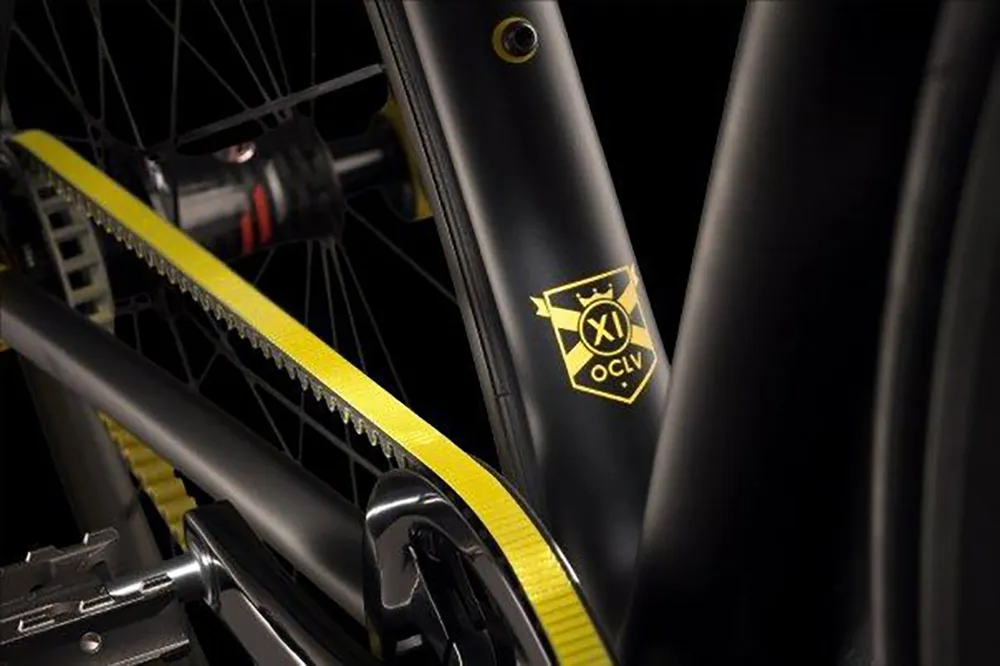
To have gone to the effort of developing a bespoke arrangement (when track ends would have worked perfectly well) for a bike that would never sell in large numbers is admirably eccentric.
That the bike was designed for a belt drive doubles the oddness factor. Belt drives are designed primarily for urban riding, but this was outwardly very much a road-going bike.
Why not just use a chain like almost every other singlespeed? That would negate the need for a splittable rear end and far more parts are available.
Why would you want a carbon fixie anyway?
Though I’ve delved deep into the pantry of pain when I’ve got it horribly wrong, the feeling of climbing a steady gradient on a fixie with the right gear is addictive.
I am no hill-climb maestro, but even I feel like a hero dancing aboard a dedicated go-fast fixie. Nothing feels wasted.
I have experienced this on many fixies, but I can only imagine how good climbing would feel on an uncompromisingly whippy carbon bike.
The District Carbon was also a totally out-of-character, niche product for such a large brand to have produced. That’s hardly a quality you could level at most bikes from mainstream brands these days.
In my eyes, that raises it to a level of coolness that is almost unsurpassed.
What if I want a modern-day District Carbon?
Sadly, the District Carbon is long gone from Trek’s line-up. Though there are a few unusual bikes in Trek’s catalogue, there’s nothing quite as lovably odd as this.
However, the adoption of T47 bottom brackets across Trek’s bikes means you could run an eccentric bottom bracket if you wanted to create a modern-day District Carbon.
An eccentric bottom bracket works on the same principle as the District Carbon’s dropouts, moving the crankset spindle about the centre of the bottom bracket.
This can be used to tension the chain, as Erik Nohlin of Specialized did to create his fixed-gear Aethos. The same design is used to tension the timing chain on a tandem.
The White Industries Eno Eccentric hub could also be used if you wished to adapt a rim-brake bike – no dice, though, if you have discs.
Will my dreams ever come true?
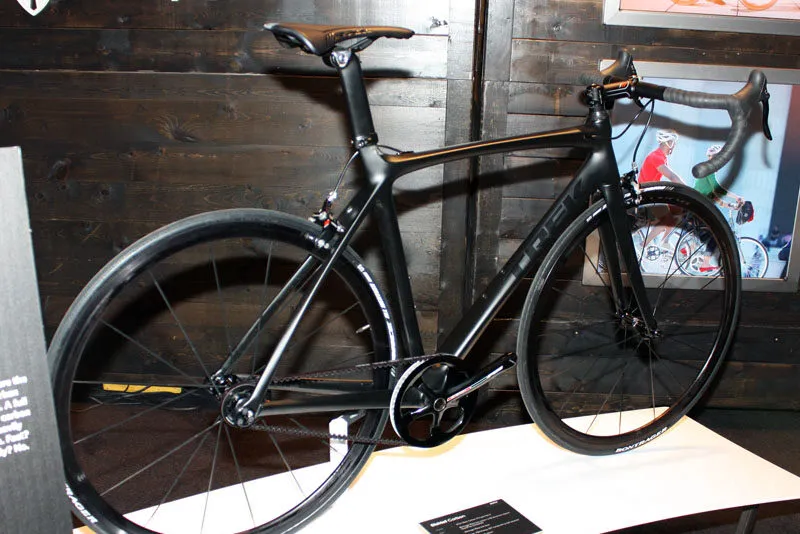
Unfortunately, I think my dreams of District Carbon ownership will remain unfulfilled.
At the time of writing, no Trek District Carbon has been sold on eBay for some time. My usual classified listing haunts also come up empty.
I suspect the few bikes produced are owned by similarly committed fixie dorks and are unlikely to be sold until their knees give out.
The few that have been sold are generally priced at around £2,000 – I don’t have the means or penchant for fiscal recklessness to spend that much on one of the most niche bikes of all time.
Still, the elusiveness and impracticality of the Trek District Carbon elevate it to a plane of almost unfathomable desirability.
Trek, if you’re listening and have a District Carbon gathering dust in a windswept Wisconsin warehouse, I’m all ears.

